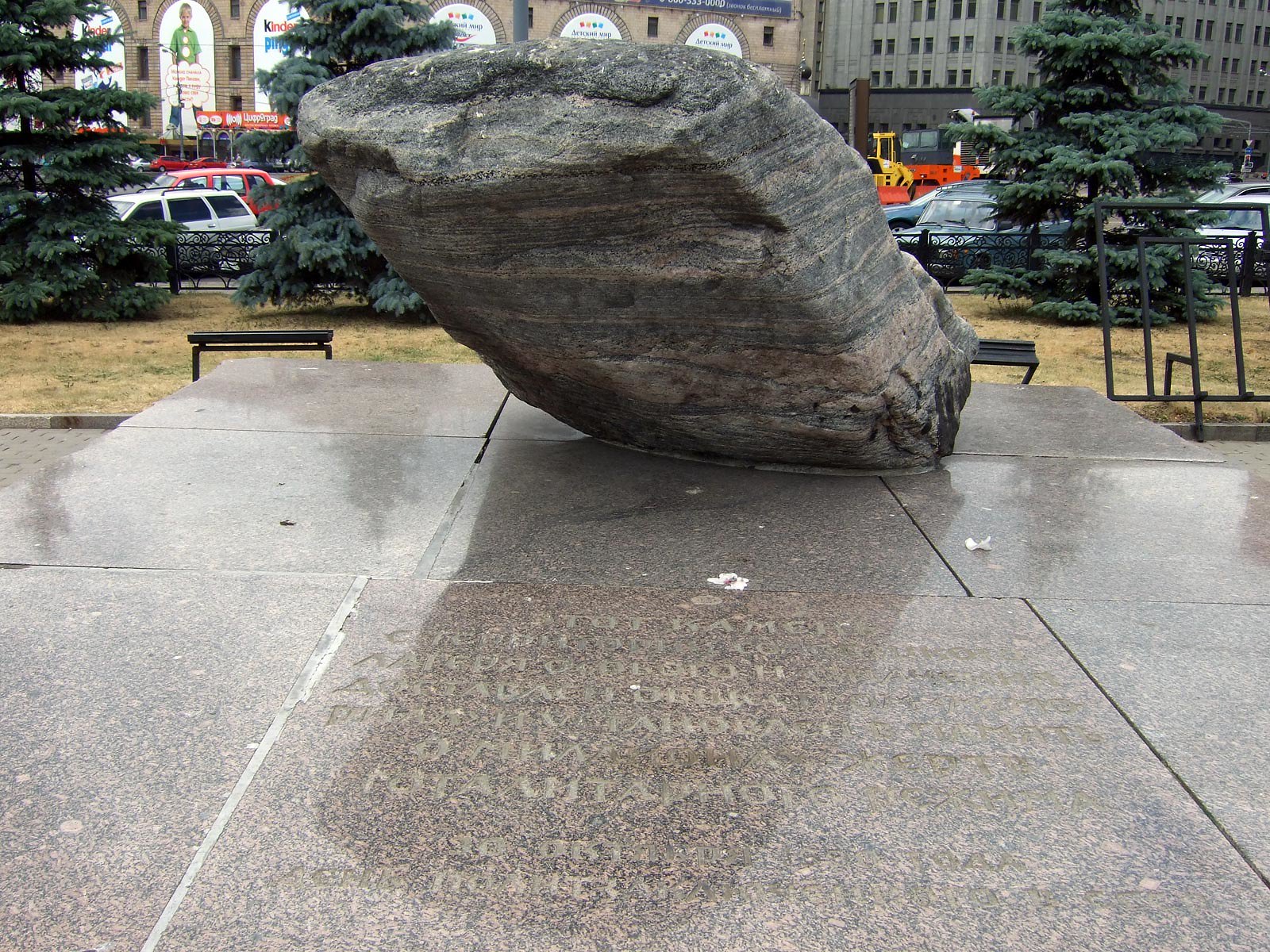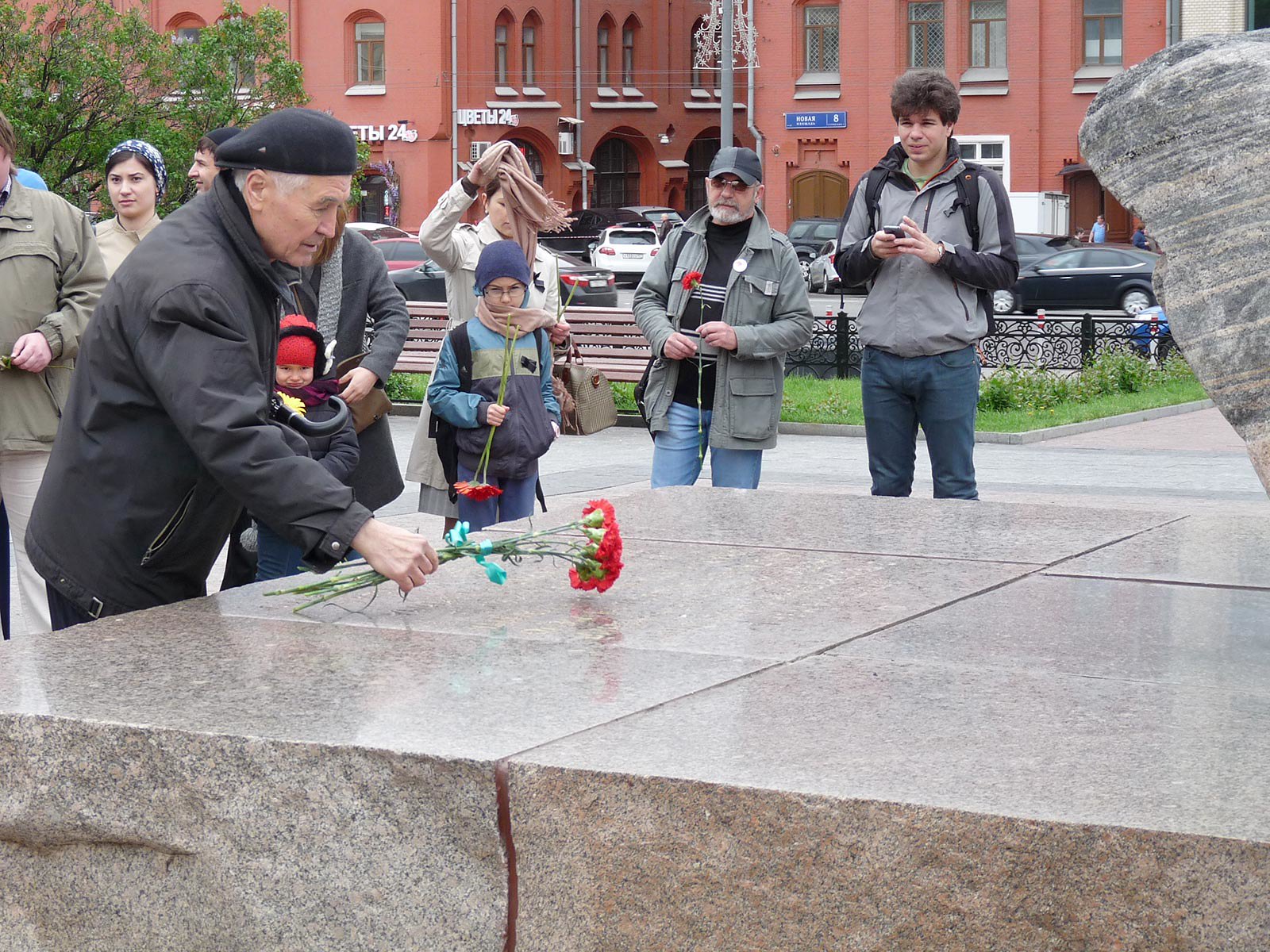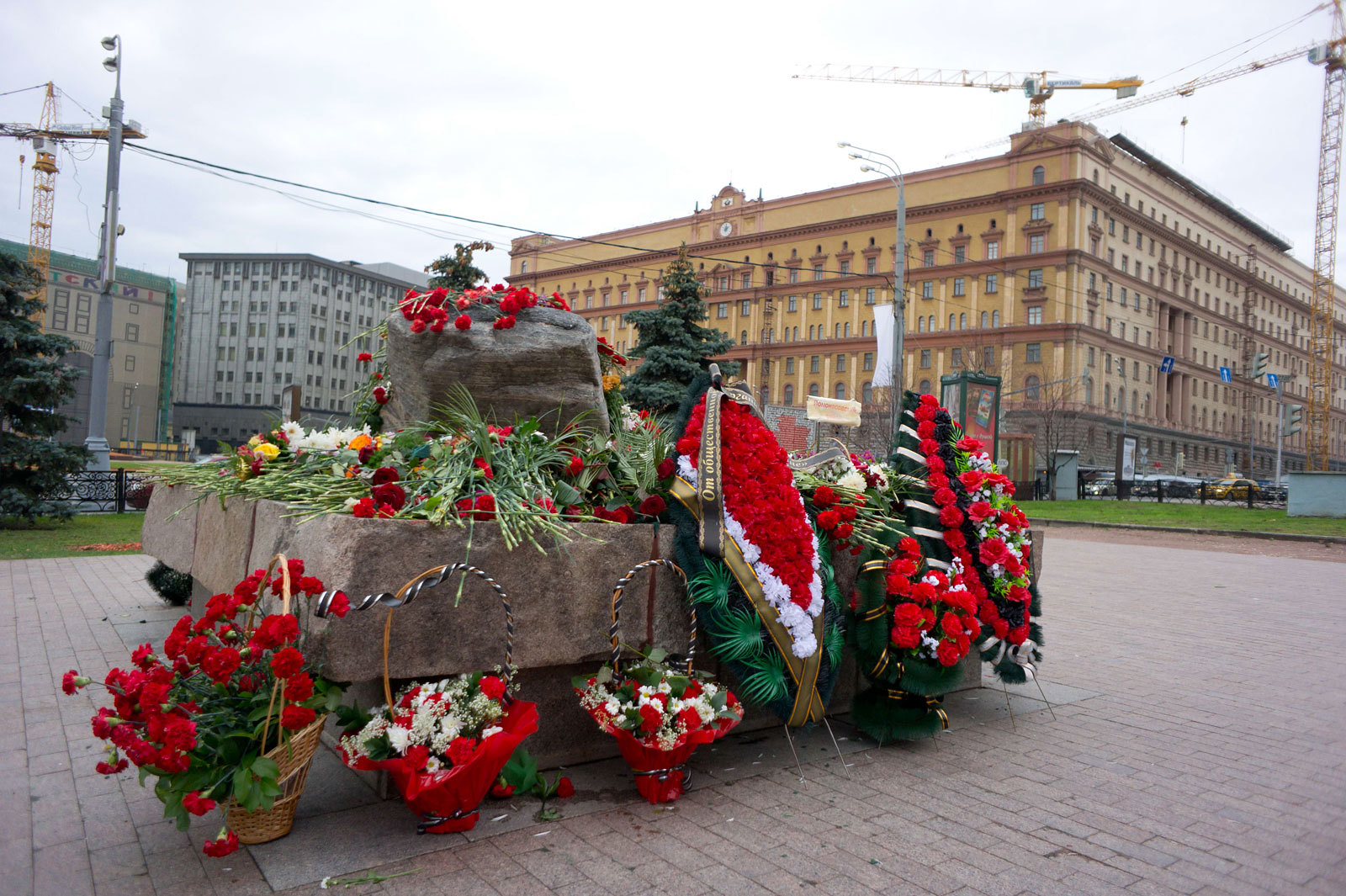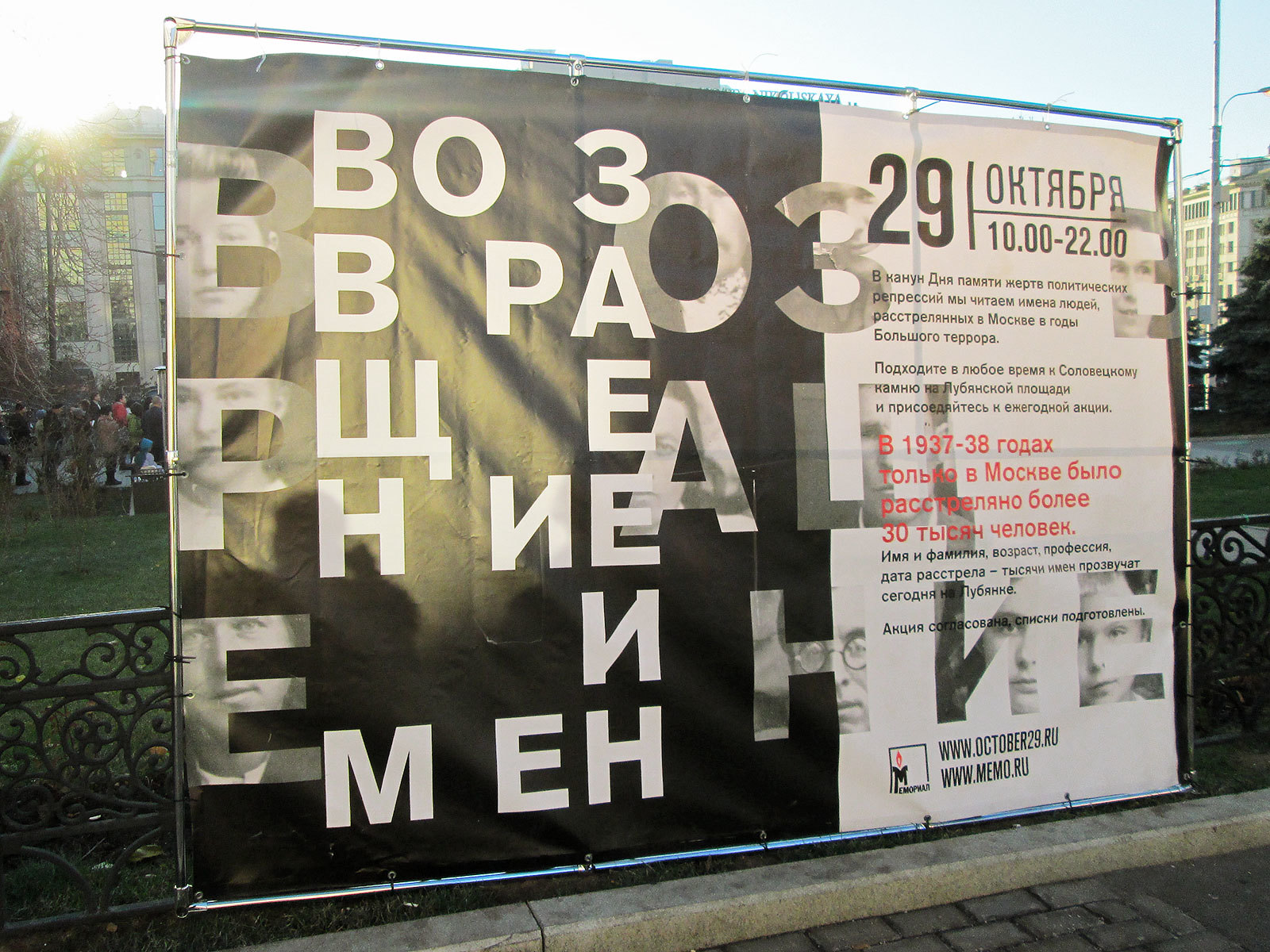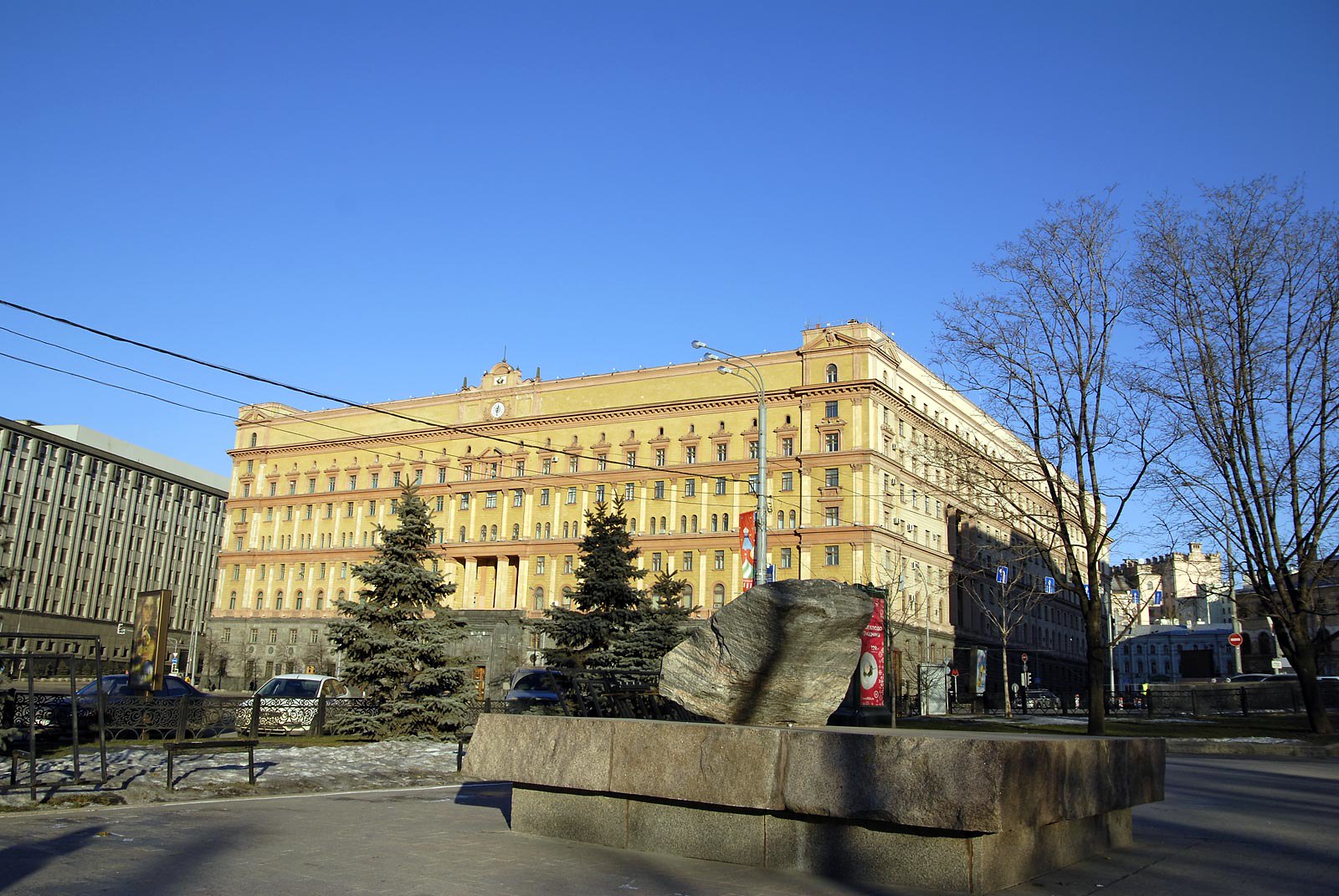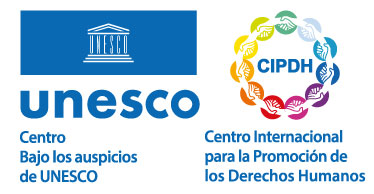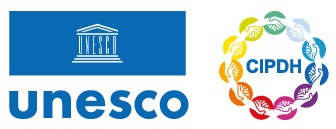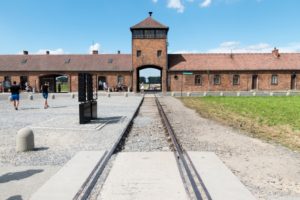Monument to the Victims of the Totalitarian Regime
Monument
Theme: Political persecution

Address
Lubyanka Square
Country
Russia
City
Moscow
Continent
Europe
Theme: Political persecution
Purpose of Memory
To honor the victims of the GULAG.
Known Designation
Solovetsky Stone
Institutional Designation
Monument to the Victims of the Totalitarian Regime
Date of creation / identification / declaration
1990
Public Access
Free
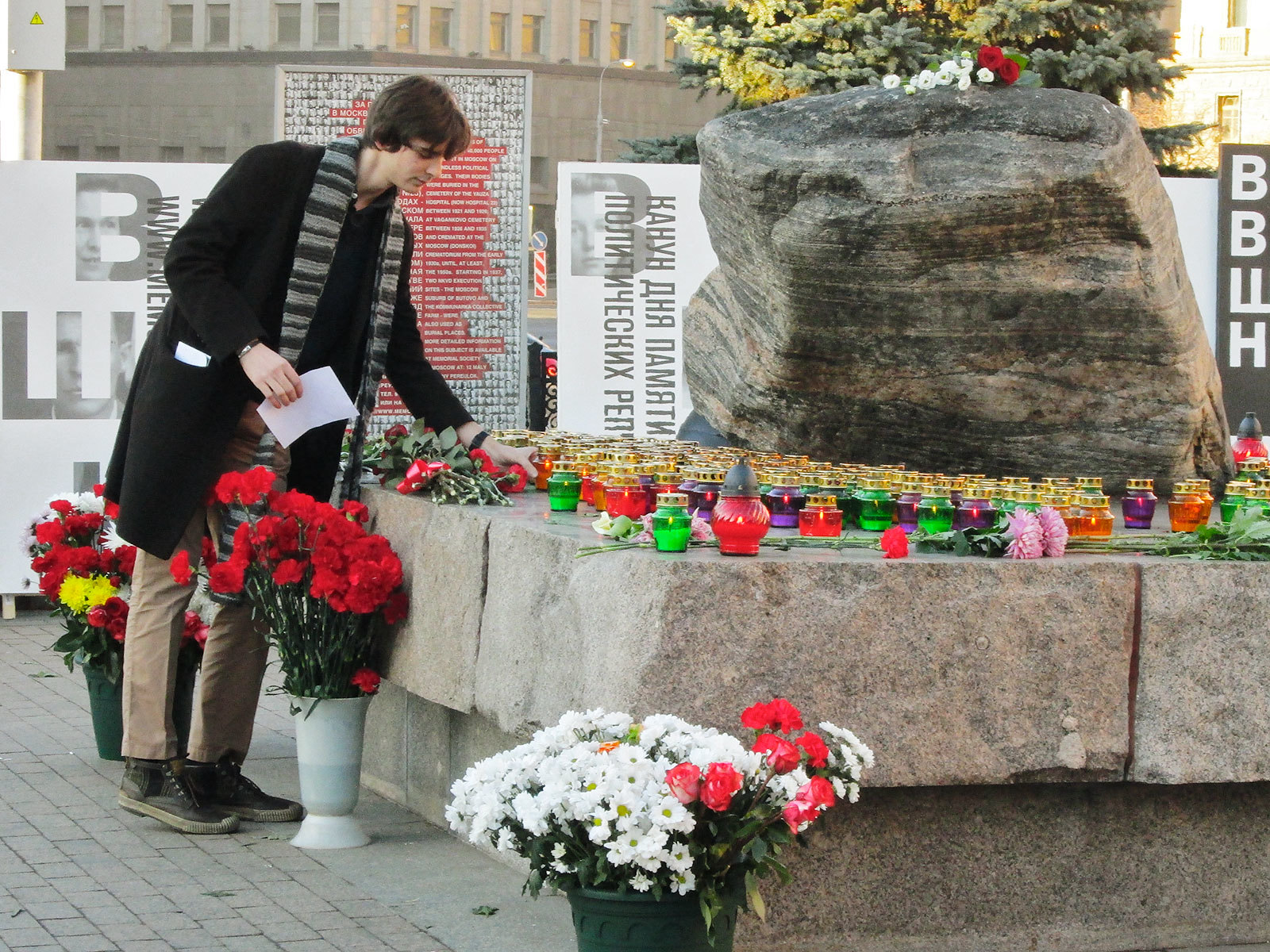
Location description
A big stone originally from the Solovetsky GULAG, in the Solovetsky archipelago, placed on a solid rectangular surface with the following inscription: “This stone is delivered by “Memorial” society members from Solovki Special Purpose Camp and was established in memory of the victims of the totalitarian regime.” Every 30 October a ceremony is held, flowers and candles are placed at the base of the Solovetsky Stone to honor the victims of the political repression of the Soviet Union.
The acronym GULAG (a Russian acronym used to refer to the Main Administration of Corrective Labor Camps) was used to designate the concentration camps of the Union of Soviet Socialist Republics (USSR) and then it was also used to refer not only to the reclusion and forced-labor camps but also to all the repressive machinery of the USSR. Although forced-labor camps had previously operated, the GULAG was officially inaugurated in 1929, administered by the soviet secret police and disbanded in 1960. Although this prison system also held people condemned for ordinary offenses, the GULAG was mainly known as the prison for political prisoners, whose number increased significantly during the period known as the Great Purge (1937-38) during Stalin’s government. About 18 million people are estimated to have gone through the almost 500 camps that operated in the USSR.
The Solovki camp, located in the archipelago of the islands with the same name, was the main forced-labor camp of the Soviet Union between 1920 and 1930. The place was closed in 1939, when the Second World War was imminent. The name GULAG became widely known after the publication, in 1973, of “The Gulag Archipelago”, by Aleksandr Solzhenitsyn, who called the Solovki prison the “mother of the GULAG”.
Mijaíl Gorbachov, elected General Secretary of the Communist Party of the Soviet Union in 1985, initiated important economic, cultural and political reforms that ended with the disbanding of the USSR. After the dissolution of the Soviet Union on 26 December 1991, Russia was internationally known as its legal successor in the international stage.
Between 1953 and 1964, the then President of the Soviet Union, Nikita Khrushchev, had initiated a “De-Stalinization” process, where he recognized political repression and massive deportation of people, and asked for the construction of a memorial to honor the victims. This initiative regained strength in 1980. The exhibition “Awareness Week”, inaugurated in 1988, became the first public event to commemorate the USSR repression that had great impact locally. As of that moment, an operation to erect a memorial for the victims started.
Memorial, a human rights association, founded in 1989, has erected more than 1000 “informal” monuments in the last years for victims of political repressions. On 30 October 1990 the first founding act of the association was performed with the inauguration in Moscow of the Solovetsky Stone monument, which consisted mainly of a stone originating from the former Solovki GULAG. The ceremony gathered thousands of people and former political prisoners were present. The date of the event was chosen in commemoration of 30 October 1974, when political prisoners mobilized to ask for that to be a protest day. In 1991, 30 October was recognized as the Day of Remembrance of Victims of Political Repressions. The monument is near the former headquarters of the Committee for State Security, better known by its Russian initials KGB.
